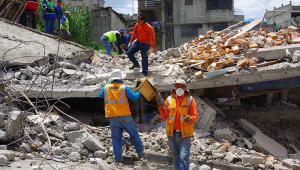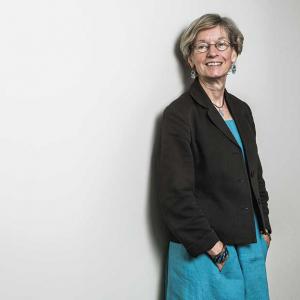4 February 2014
Medellín’s is a story of successful transformation. Once gripped by violence and drug cartels, Colombia’s second city has evolved into a world-class model of urban innovation. It’s Mayor, Aníbal Gaviria Correa, tells EY’s Libardo Bueno, Sandra Buitrago and Hernán Sánchez how they did it.
Medellín, 1991. The traditional cultural capital of Colombia is beset by entrenched social problems and high levels of violence.
Medellín, 2013. Judges from The Wall Street Journal and the Urban Land Institute name it “City of the Year,” citing the huge rate of development and success in bringing its residents together to assure opportunities for all. How has this transformation occurred?
Aníbal Gaviria Correa, Medellín’s Mayor since 2012 and one of the key architects of the city’s renaissance, says the award is not only recognition for the city’s recent progress, but also serves as a benchmark for other cities who have overcome a checkered past. “Medellín is today an example for many cities around the world,” he says. “This is because, despite having experienced very dark and difficult times generated by violence 20 years ago, there has been a true metamorphosis, passing from fear and suffering to hope, and now from hope to a city full of life.”
The “City of the Year” competition is designed to recognize the most innovative urban centers and was launched in June 2012 with a list of 200 cities compiled by the Urban Land Institute. The cities were selected based on eight criteria: environment and land use, culture and livability, economic and investment climate, progress and potential, places of power, education and human capital, technology and research, and mobility and infrastructure. Of these 200 cities, three were chosen as finalists (Tel-Aviv, New York and Medellín), with Medellín victorious after more than 900,000 online votes.
A winning story
Medellín’s triumph can be attributed to any number of factors. Voters were doubtlessly impressed by the fact that the city’s homicide rate fell nearly 80% between 1991 and 2010. In addition, new public libraries, parks and schools have been built, mainly in the poorest neighborhoods, and much emphasis has been placed on improving the quality of public spaces by investing in new urban promenades, plazas and public art.
Another impressive city feature is how EPM, the municipal utility that supplies electricity, gas, water, sanitation and telecommunications to up to 12 million Colombians, is constitutionally mandated in Medellín to provide clean water and electricity, even to houses in illegal slums. Its annual profits also go directly to city infrastructure, such as schools and parks. New transportation systems, though, are a stand-out feature of Medellín’s progress. As well as contributing to a reduction in crime, the city’s public transport network has also helped reduce CO2 emissions by 175,000 tons a year. The new metro system and the installation of escalators on steep hills have both made huge contributions.
For example, the 385-meter escalator installed in one of the city’s poorest neighborhoods, Comuna Trece, in 2011 allows residents to ride up and down a hill too steep for buses or cars in six minutes, rather than climb the equivalent of a 28-storey building. Such projects, which are crucial in helping connect the poorer neighborhoods in the surrounding valley to the increasingly prosperous and thriving city center, have also attracted politicians and urban leaders from cities including Rio de Janeiro, Johannesburg and Washington DC to witness them for themselves.
The new metro system, too, has won admirers from around the world. Carrying 500,000 people every day, it has, according to Mayor Correa, helped bring the city’s previously disparate communities together. “As a means of urban transport, it guarantees the presence of the state in areas that had been forgotten,” he explains. “This is what being an innovator means in Medellín, and this helps explain why we have been recognized by the award in this way.” And when you factor in the city’s new free public bicycle system, “EnCicla“, its rapid-transit-bus system, “Metroplús,” it is clear that Medellín’s residents now have an integrated network of transport options at their disposal.
The city’s multitude of new transportation projects have been financed largely through PPPs — a vital funding formula, given that its budget is far smaller than other cities it was competing against — and is also an indication of how different sectors of the city have worked together to overcome different challenges. Another good example of collaboration is that engineering firms have designed public buildings on a pro bono basis, with another being the city’s embrace of participatory budgeting, which enables citizens and community organizations to own a portion of the municipal budget, 5% in this case, and allocate funds to neighborhood priorities such as new health centers, youth groups and college scholarships.
The Mayor describes this as part of the “civic urbanism” that has swept the city in recent years; generating positive changes that occur on the understanding that urban planning is not only about construction, but also about citizen participation. Certainly, city residents’ pride in Medellín was reflected in the number of votes received during the awards process, as well as huge support and solidarity from fellow Colombians in cities such as Bogotá, Barranquilla and Cali.
Escaping the shadow of history
Some might suggest that the city’s historical problems would undermine the path to development, but the Mayor is keen to stress that such challenges encouraged a greater level of innovation in response. “The difficulties contributed to making Medellín into the innovative city that it is today,” he says.
While Medellín’s challenges are still many, there is little doubt that the city’s focus on innovation at every step has not only vastly improved the quality of life for its residents, but has also broken down barriers, fostered creativity and strengthened collaboration. “Innovation is essentially something that invites you to reinvent yourself every day and one cannot think of looking back, but to think in the future,” concludes Mayor Correa. “While much remains to be done, we are going to keep moving forward to meet the challenges of our city and our society.”
This feature was first published in the December issue of EY's Dynamics













